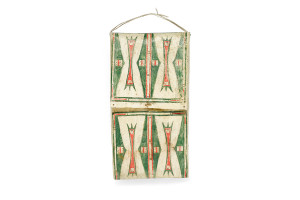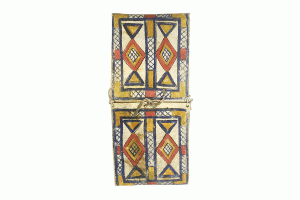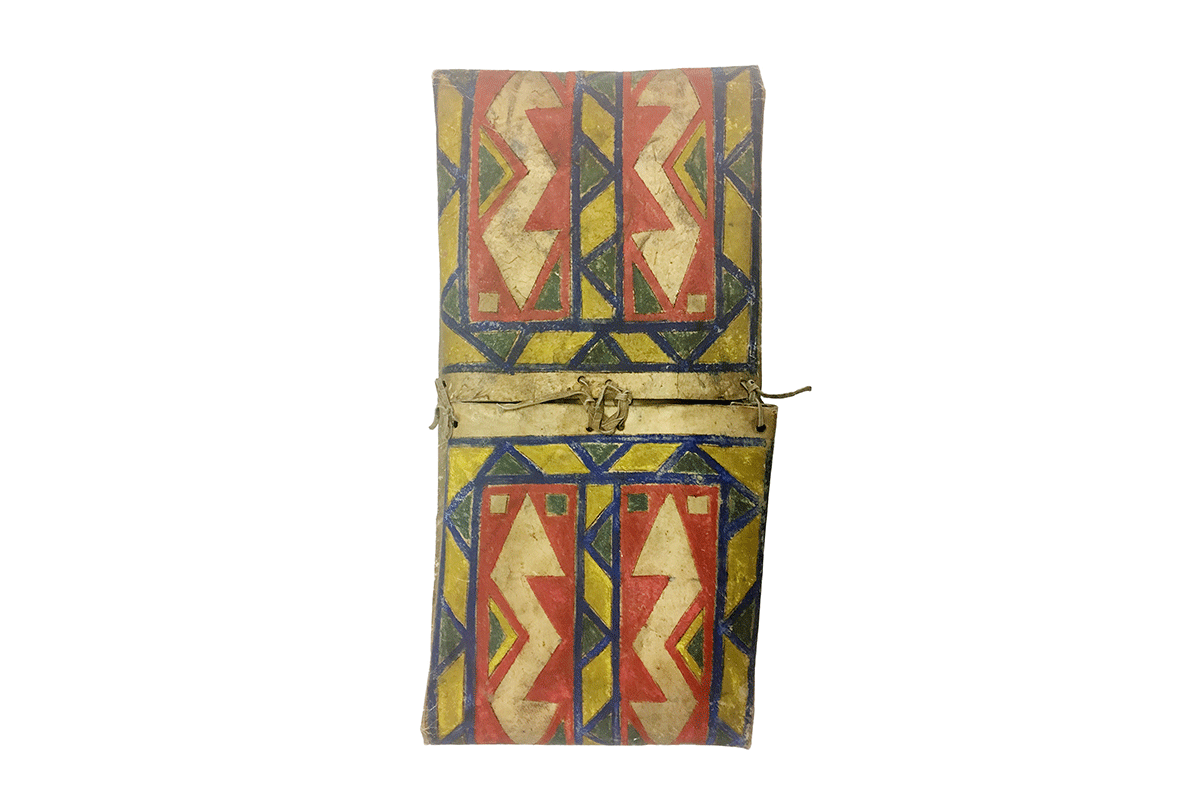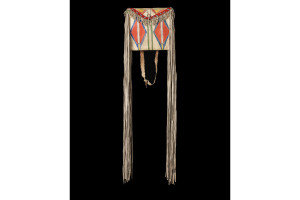
Parfleche
Learn more about Parfleche
The word ‘parfleche’ has its origins in the French fur trade of the sixteenth and seventeenth centuries. Literally translated as ‘to turn away arrows,’ the term likely refers to the toughness of rawhide and its concurrent use in the manufacture of war shields. The majority of parfleche were made on the Plains between 1750 and 1880. Although the abstracted design elements have their roots in older forms of artistic expression, parfleche were a relatively new invention corresponding to the introduction of horses to the Plains. The transformation from semi-horticultural to a nomadic way of life necessitated containers to carry possessions including dried foods, tools and ceremonial regalia.
The geometric compositions painted on parfleche, as well as the manufacture of parfleche themselves, were an artistic privilege of Plains women. Before forming the individual containers, hides had to be cleaned, cut and stretched. The design of the finished product would be carefully determined before applying rich and colorful painting to the parfleche. The bold designs of these striking containers reveal affinities with earlier traditions of painting on hide that originated in the Northeast and Great Lakes regions, before the westward migration of certain Woodlands groups to the Plains in the early contact period.
Status: All
Category: Parfleche
Results: 17





High-resolution images available. Contact Gallery for rights.